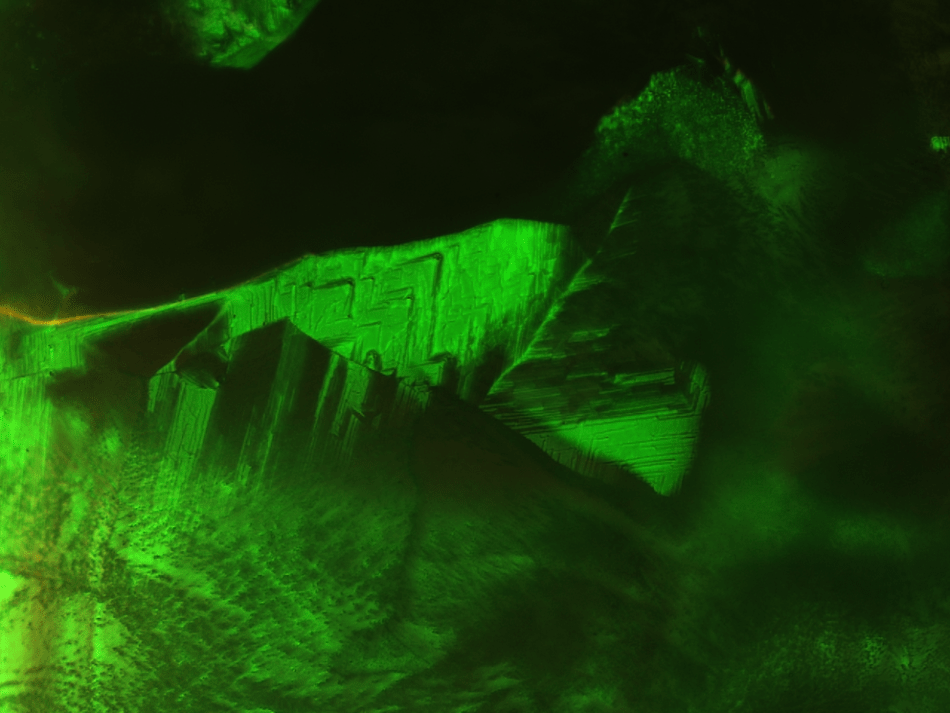Nov 8 2019
An international team of researchers from Penn State, the Air Force Research Laboratory, and the National Sun Yat-sen University, Taiwan, has reported a new method for modifying the structure of liquid crystals.
 Close-up image of a millimeter-sized Blue-phase liquid crystal during its formation stage. Image Credit: Khoo Lab/Penn State.
Close-up image of a millimeter-sized Blue-phase liquid crystal during its formation stage. Image Credit: Khoo Lab/Penn State.
The new method could enable the creation of quick-responding liquid crystals approriate for next-generation displays—3D, virtual reality, and augmented reality—and sophisticated photonic applications like bio-sensors, mirrorless lasers, and fast/slow light generation.
“The liquid crystals we are working with are called blue-phase liquid crystals,” stated Iam Choon Khoo, the William E. Leonhard Professor of Electrical Engineering, and the corresponding author of the study.
The most important thing about this research is the fundamental understanding of what happens when you apply a field, which has led to the development of Repetitively-Applied Field technique. We believe that this method is almost a universal template that can be used for reconfiguring many similar types of liquid crystals and soft matter.
Iam Choon Khoo, William E. Leonhard Professor of Electrical Engineering, Penn State
Blue-phase liquid crystals usually self-assemble into a cubic photonic-crystal structure. According to the researchers, properties not present in the existing form could be developed by creating other structures.
At the end of almost two years of experimentation, they understood that when an intermittent electrical field is applied and the system is allowed to relax between applications and to dissipate the accumulated heat, it is possible to gradually coax the crystals into field-free and stable tetragonal and orthorhombic structures.
The ensuing liquid crystals exhibit a photonic bandgap that can be customized to anywhere within the visible spectrum, and display rapid responses needed for a range of next-generation displays and sophisticated photonic applications.
By adding a polymer, the crystals can be stabilized in a wide temperature range, from freezing to almost boiling-point, in comparison with their standard pristine equivalents that are stable only within a 5-degree range. The polymer scaffold also accelerates the switching response.
In the most recent research, the researchers applied what they learned in this study to develop new crystal structures and orientations using the electric field from a laser source.
The paper titled “Reconfiguration of three-dimensional liquid-crystalline photonic crystals by electrostriction” was recently published online in Nature Materials.
The group of authors includes Khoo’s former doctoral student Chun-Wei Chen and Duan Yi Guo, a doctoral student at National Sun-yat Sen University (NSYSU), both first authors on the paper; Professor Tsung-Hsien Lin and other graduate students at NSYSU; and Air Force Research Laboratory chief scientist Timothy J. Bunning.
This study was funded by the Asian Office of Aerospace Research and Development, Air Force Office of Scientific Research, and the Ministry of Science and Technology, Taiwan.